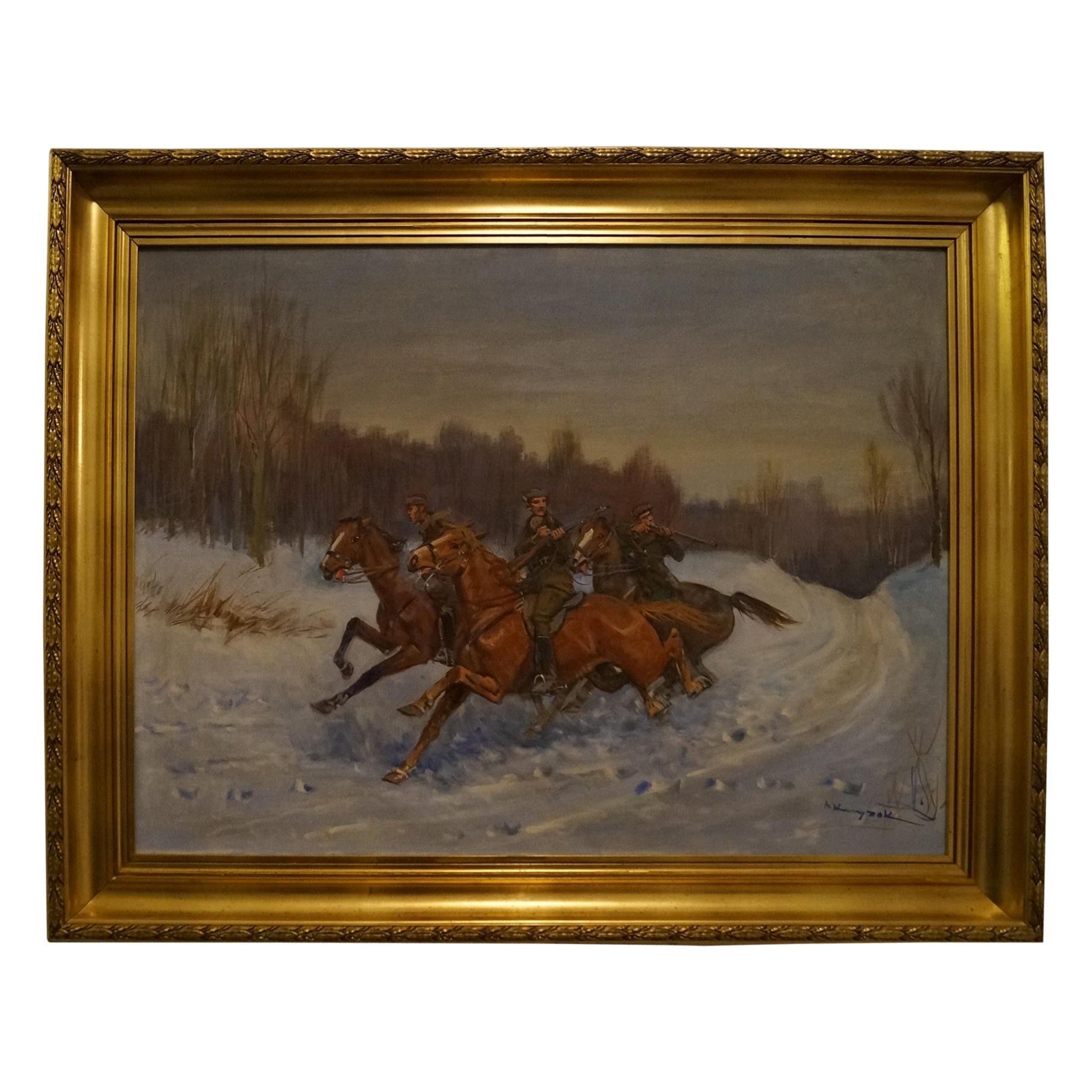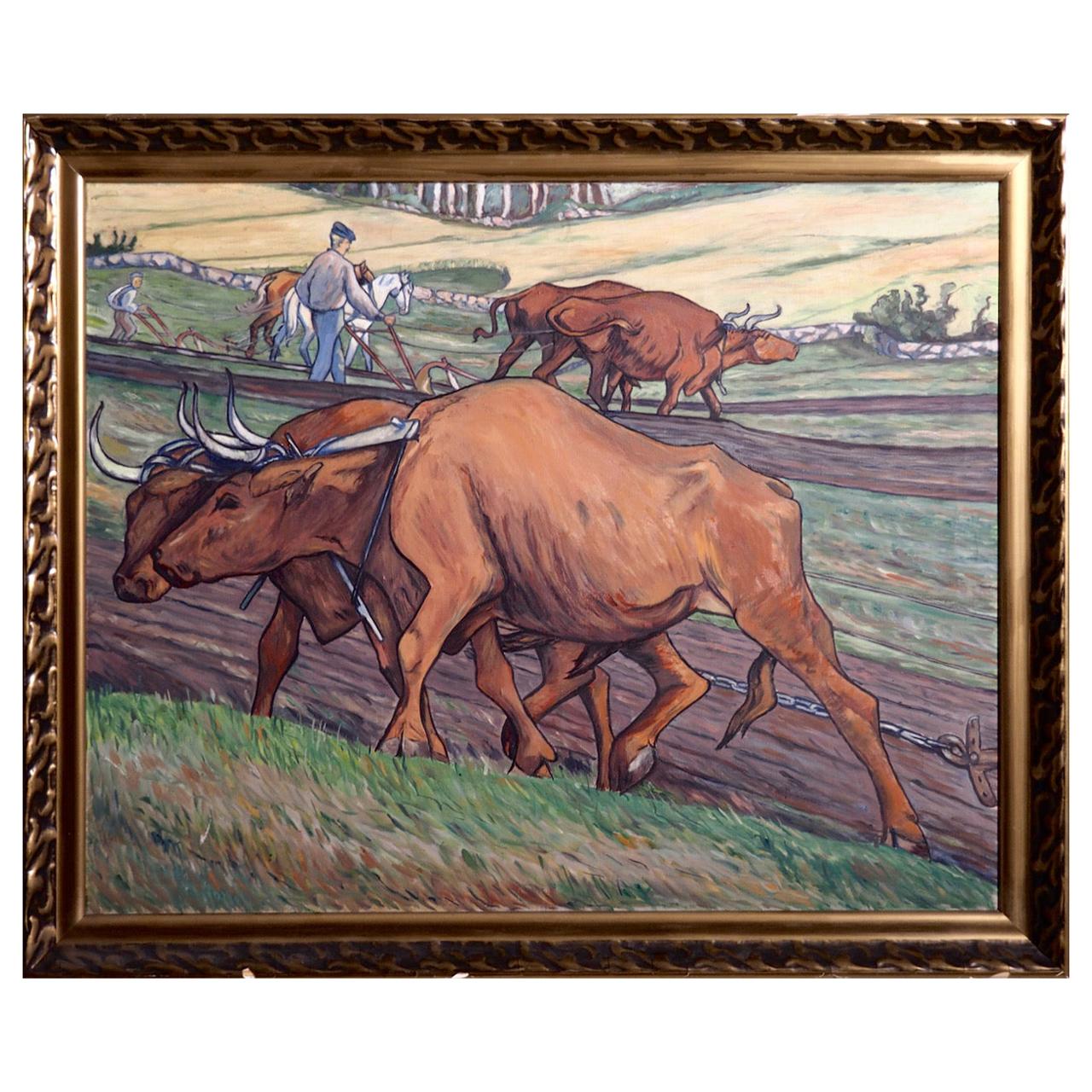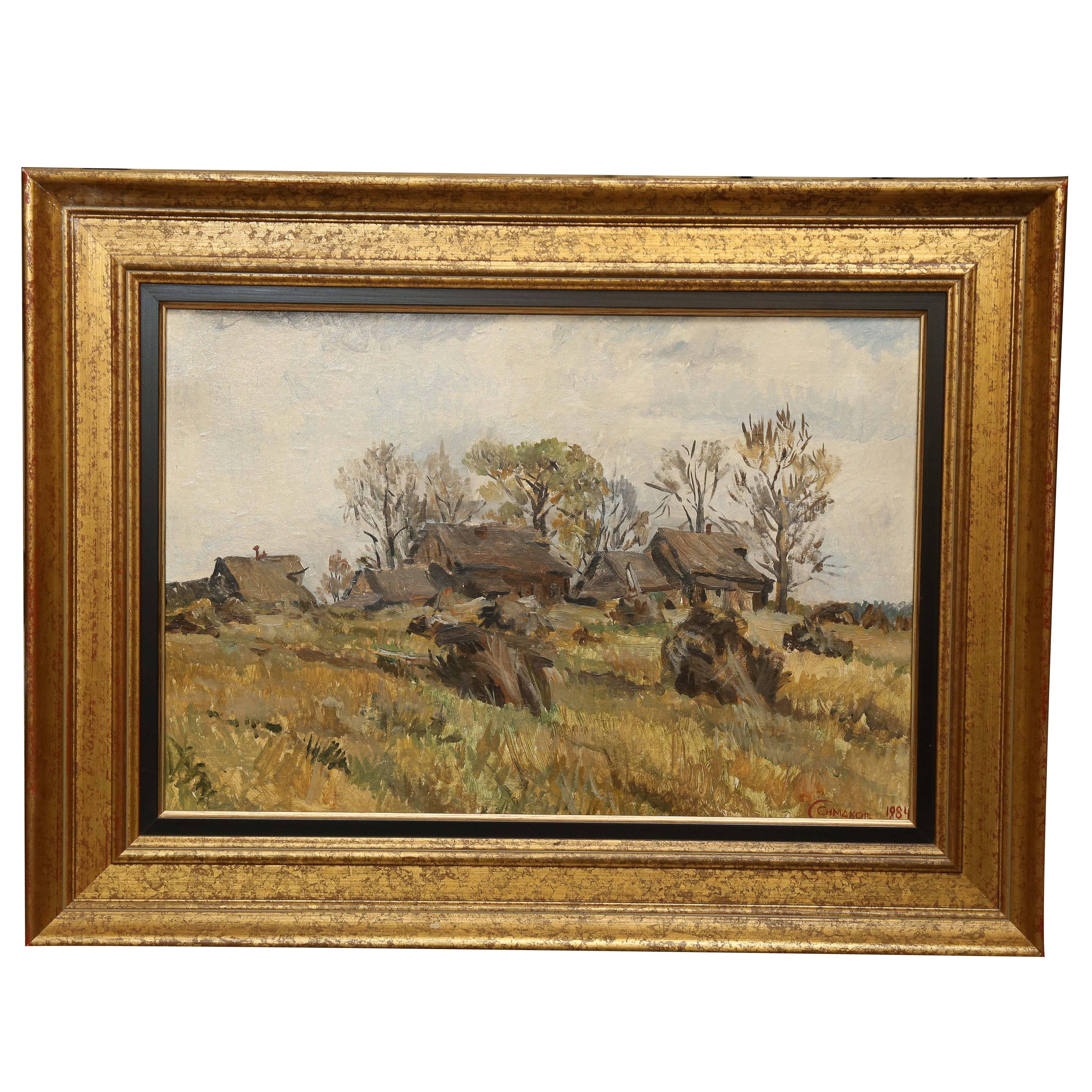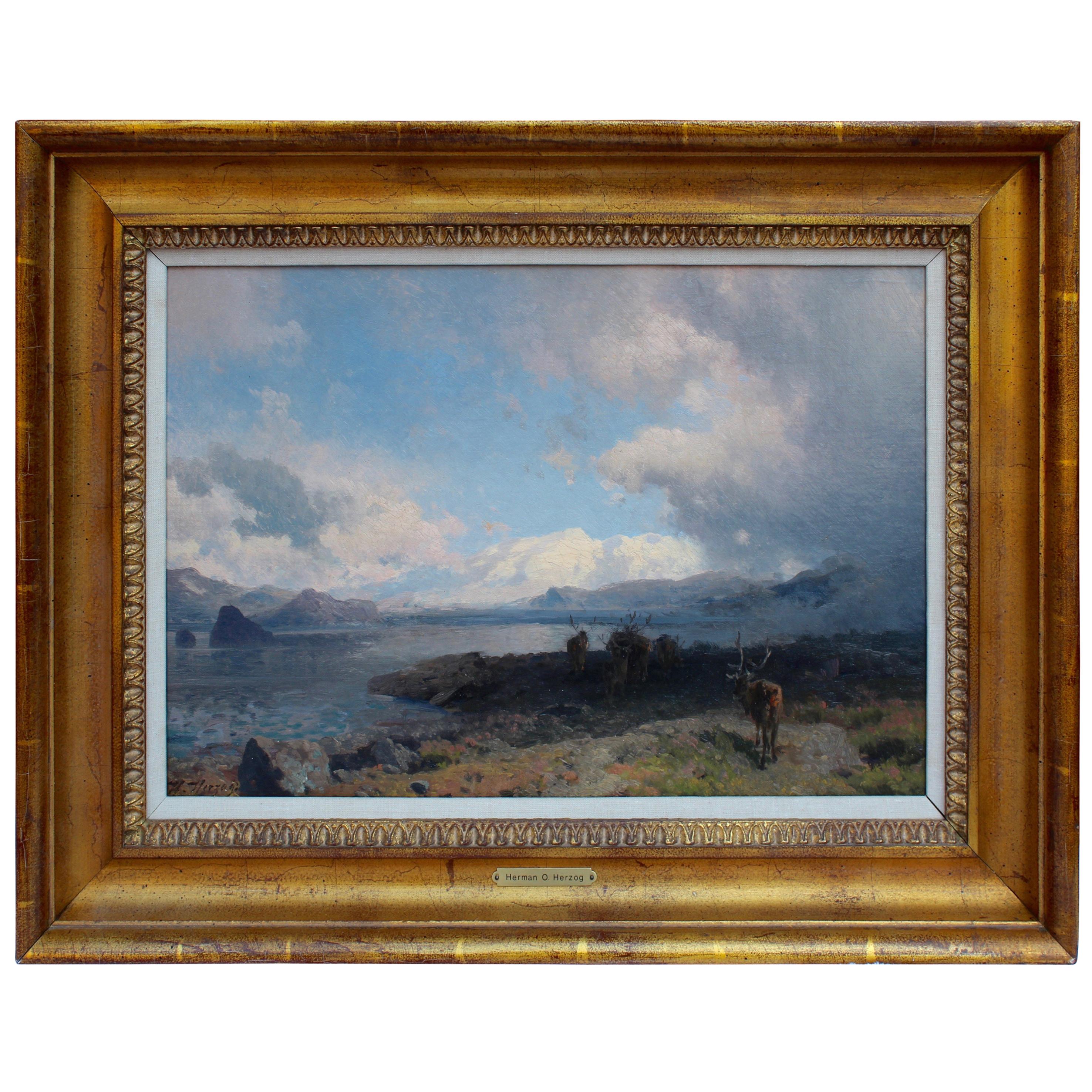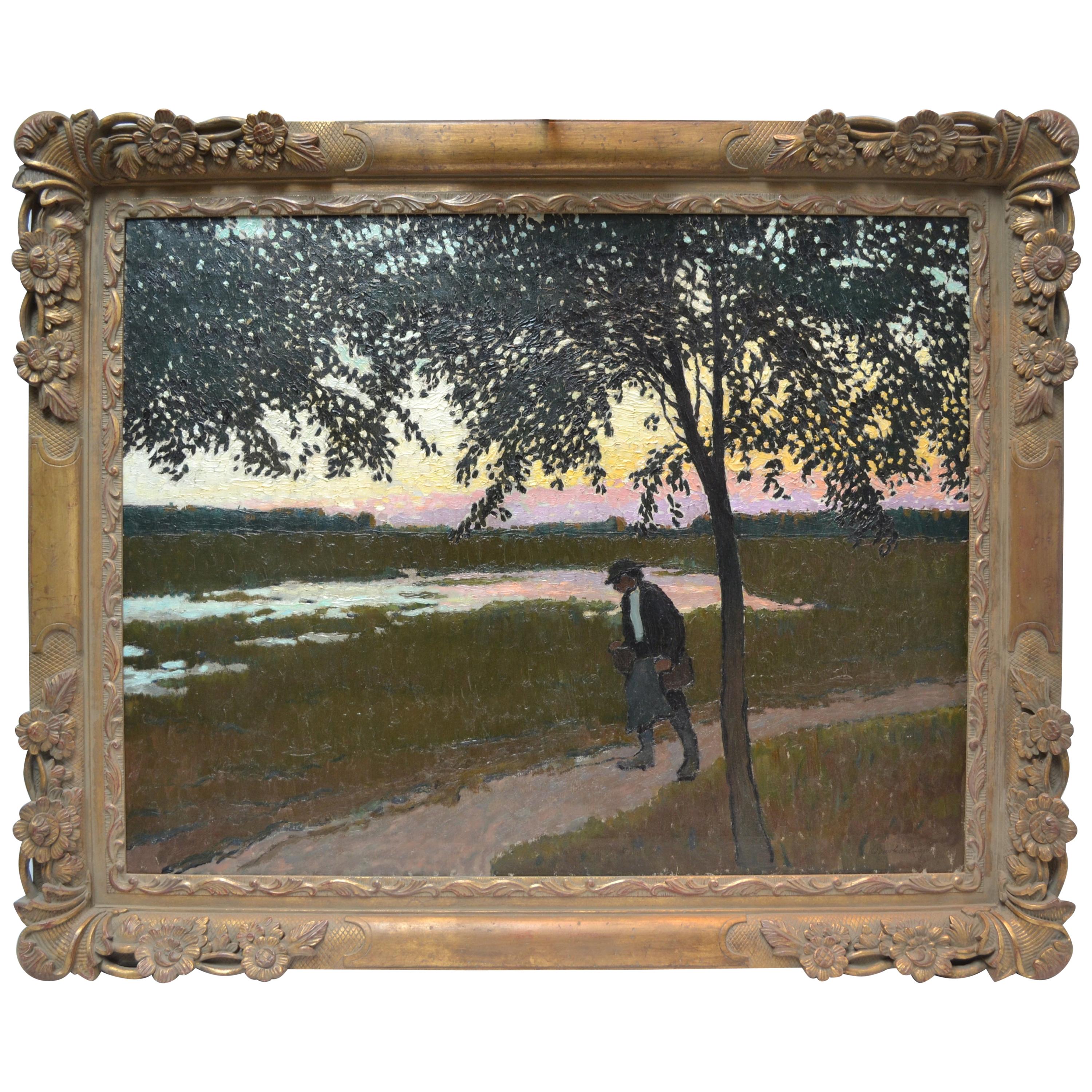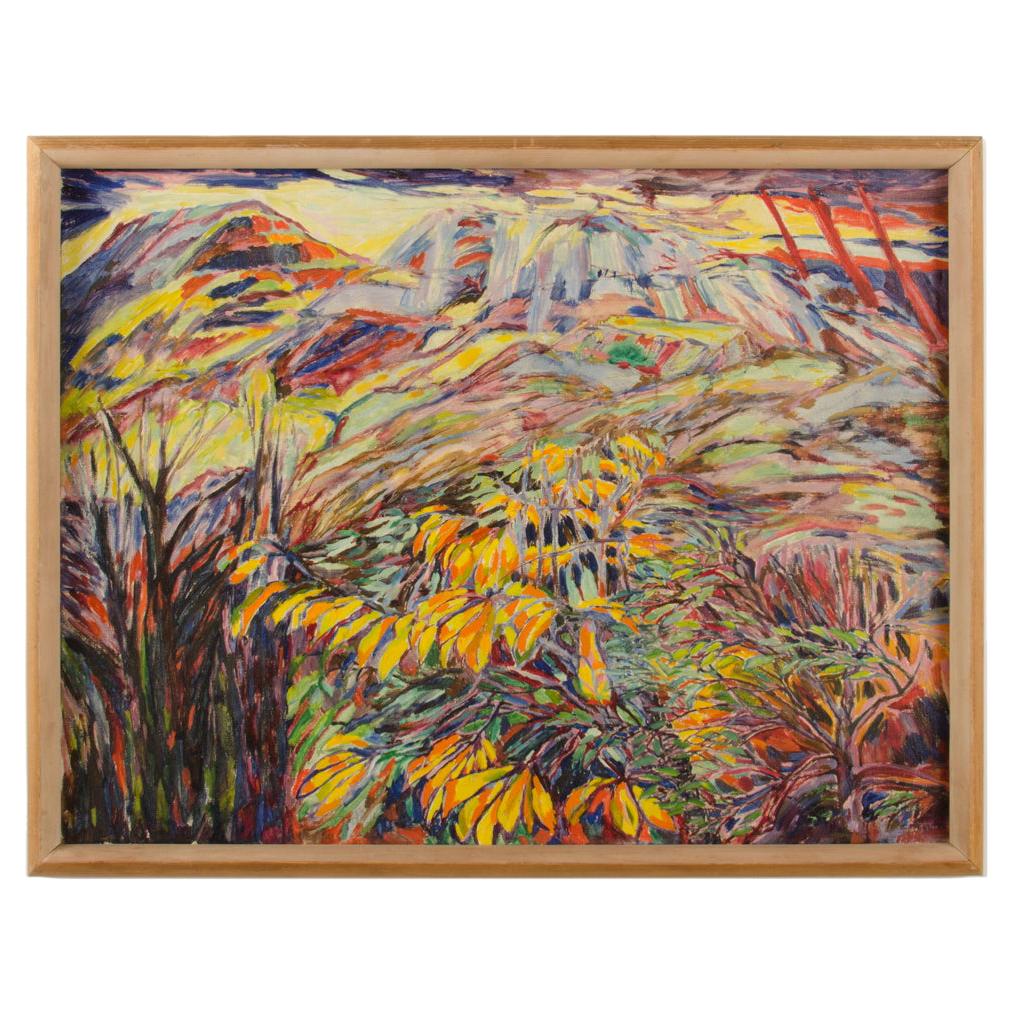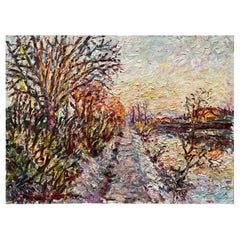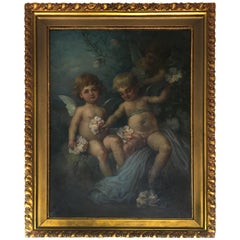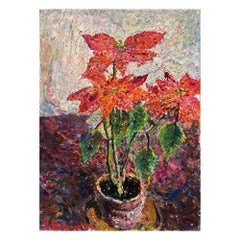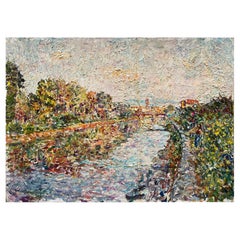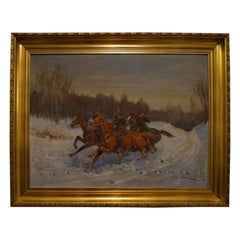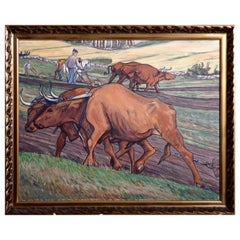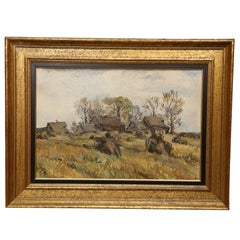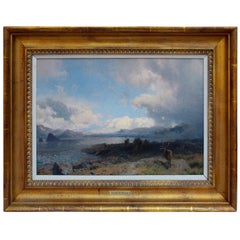Items Similar to "In the Wilderness" by Juszkó Béla. Hungary, 1960
Want more images or videos?
Request additional images or videos from the seller
1 of 20
"In the Wilderness" by Juszkó Béla. Hungary, 1960
$5,391.65
£4,013.73
€4,500
CA$7,385.21
A$8,213.96
CHF 4,289.08
MX$99,955.19
NOK 54,778.05
SEK 51,372.14
DKK 34,256.93
Shipping
Retrieving quote...The 1stDibs Promise:
Authenticity Guarantee,
Money-Back Guarantee,
24-Hour Cancellation
About the Item
JUSZKÓ, BÉLA TATA-TÓVÁROS, 1877 - 1969, BUDAPEST
Painter. He trained in the Budapest School of Drawing between 1893 and 1898. His masters were Ede Balló and Bertalan Székely. In 1904-05 he studied in Dachau on a scholarship. He studied in Europe and Turkey. At home, he painted realistic pictures of the lowlands on the Hortobágy and the Bugacs Plain. During the First World War he worked as a war painter. From 1901 he was an exhibiting artist. In 1921 he opened a collection exhibition in the Kunsthalle. He was a romanticist painter of the Hungarian landscape and fauna. Several of his works can be found in the Hungarian National Gallery.
- Dimensions:Height: 45.67 in (116 cm)Width: 65.75 in (167 cm)Depth: 2.37 in (6 cm)
- Materials and Techniques:
- Place of Origin:
- Period:
- Date of Manufacture:1960
- Condition:Wear consistent with age and use.
- Seller Location:Budapest, HU
- Reference Number:1stDibs: LU3266331928292
About the Seller
4.9
Vetted Professional Seller
Every seller passes strict standards for authenticity and reliability
1stDibs seller since 2017
1,353 sales on 1stDibs
Typical response time: <1 hour
- ShippingRetrieving quote...Shipping from: Budapest, Hungary
- Return Policy
Authenticity Guarantee
In the unlikely event there’s an issue with an item’s authenticity, contact us within 1 year for a full refund. DetailsMoney-Back Guarantee
If your item is not as described, is damaged in transit, or does not arrive, contact us within 7 days for a full refund. Details24-Hour Cancellation
You have a 24-hour grace period in which to reconsider your purchase, with no questions asked.Vetted Professional Sellers
Our world-class sellers must adhere to strict standards for service and quality, maintaining the integrity of our listings.Price-Match Guarantee
If you find that a seller listed the same item for a lower price elsewhere, we’ll match it.Trusted Global Delivery
Our best-in-class carrier network provides specialized shipping options worldwide, including custom delivery.More From This Seller
View AllLandscape in Autumn by Guido Borgianni, Italy, 1950
Located in Budapest, HU
Guido Borgianni was born in New York on June 11, 1915, to Florentine Roberto Borgianni, a leather merchant, and Sara Herreshoff, who belonged to one of the wealthiest families in the United States and became a legend in the construction of the racing boats that also participated in and won the America's Cup. Guido was not even a year old when, once his parents' marriage had foundered, his father brought him back to Florence.
Of Guido Borgianni's extraordinary gifts as a draftsman and painter, Galileo Chini, his neighbor, noticed, and he worked to see that talent refined. Thus Borgianni attended the Academy of Fine Arts under Felice Carena, a strict teacher but one who knew how to appreciate the qualities of his pupils. In the first part of his life he signed his works in black. Then, when he became a pointillist, he began to use red. Among his great admirers were Alessandro Parronchi and Oskar Kokoschka, who was captivated by Borgianni's paintings during his Florentine stay in 1949. Soffici, Saetti, Malaparte, Montale, Pratolini, and Cesare Zavattini, the screenwriter of Vittorio De Sica and Italian neorealism, all liked him very much, finding him "as beautiful as a Corot." In 1946 he exhibited at the Quadriennale in Rome. After his marriage to Simonetta Avila in 1954, his activities were enlivened by travel: in 1955 to Venice, in 1957 to Paris, from 1958 to 1962 around Italy, in 1964 to Spain, in 1971 to New York and Barbados Islands. In 1950 he was awarded a prize at the Mostra Nazionale del Fiorino in Florence, and in 1956 he was appointed Academician of the Accademia delle Arti del Disegno in Florence. In 1957 he was awarded First Prize at the Portrait Exhibition at Dante's House in Florence. Upon his death, deep condolences were expressed by the president of the Florence City...
Category
Vintage 1950s Italian Paintings
Materials
Canvas
Three Little Angels by Krupka Ferenc, Budapest, 1911
By Krupka Ferenc
Located in Budapest, HU
Great and superb oil on canvas by Krupka Ferenc.
Category
Early 20th Century Italian Paintings
Materials
Canvas
"Christmas Stars" by Guido Borgianni. Italy, 1960
Located in Budapest, HU
Guido Borgianni was born in New York on June 11, 1915, to Florentine Roberto Borgianni, a leather merchant, and Sara Herreshoff, who belonged to one of the wealthiest families in the United States and became a legend in the construction of the racing boats that also participated in and won the America's Cup. Guido was not even a year old when, once his parents' marriage had foundered, his father brought him back to Florence.
Of Guido Borgianni's extraordinary gifts as a draftsman and painter, Galileo Chini, his neighbor, noticed, and he worked to see that talent refined. Thus Borgianni attended the Academy of Fine Arts under Felice Carena, a strict teacher but one who knew how to appreciate the qualities of his pupils. In the first part of his life he signed his works in black. Then, when he became a pointillist, he began to use red. Among his great admirers were Alessandro Parronchi and Oskar Kokoschka, who was captivated by Borgianni's paintings during his Florentine stay in 1949. Soffici, Saetti, Malaparte, Montale, Pratolini, and Cesare Zavattini, the screenwriter of Vittorio De Sica and Italian neorealism, all liked him very much, finding him "as beautiful as a Corot." In 1946 he exhibited at the Quadriennale in Rome. After his marriage to Simonetta Avila in 1954, his activities were enlivened by travel: in 1955 to Venice, in 1957 to Paris, from 1958 to 1962 around Italy, in 1964 to Spain, in 1971 to New York and Barbados Islands. In 1950 he was awarded a prize at the Mostra Nazionale del Fiorino in Florence, and in 1956 he was appointed Academician of the Accademia delle Arti del Disegno in Florence. In 1957 he was awarded First Prize at the Portrait Exhibition at Dante's House in Florence. Upon his death, deep condolences were expressed by the president of the Florence City...
Category
Vintage 1950s Italian Paintings
Materials
Canvas
Arno River in springtime by Guido Borgianni Italy. 1950
Located in Budapest, HU
Guido Borgianni was born in New York on June 11, 1915, to Florentine Roberto Borgianni, a leather merchant, and Sara Herreshoff, who belonged to one of the wealthiest families in the United States and became a legend in the construction of the racing boats that also participated in and won the America's Cup. Guido was not even a year old when, once his parents' marriage had foundered, his father brought him back to Florence.
Of Guido Borgianni's extraordinary gifts as a draftsman and painter, Galileo Chini, his neighbor, noticed, and he worked to see that talent refined. Thus Borgianni attended the Academy of Fine Arts under Felice Carena, a strict teacher but one who knew how to appreciate the qualities of his pupils. In the first part of his life he signed his works in black. Then, when he became a pointillist, he began to use red. Among his great admirers were Alessandro Parronchi and Oskar Kokoschka, who was captivated by Borgianni's paintings during his Florentine stay in 1949. Soffici, Saetti, Malaparte, Montale, Pratolini, and Cesare Zavattini, the screenwriter of Vittorio De Sica and Italian neorealism, all liked him very much, finding him "as beautiful as a Corot." In 1946 he exhibited at the Quadriennale in Rome. After his marriage to Simonetta Avila in 1954, his activities were enlivened by travel: in 1955 to Venice, in 1957 to Paris, from 1958 to 1962 around Italy, in 1964 to Spain, in 1971 to New York and Barbados Islands. In 1950 he was awarded a prize at the Mostra Nazionale del Fiorino in Florence, and in 1956 he was appointed Academician of the Accademia delle Arti del Disegno in Florence. In 1957 he was awarded First Prize at the Portrait Exhibition at Dante's House in Florence. Upon his death, deep condolences were expressed by the president of the Florence City...
Category
Vintage 1950s Italian Paintings
Materials
Canvas
"Plancton I" by Taeko Mima Oil on Canvas Painting, 1999
Located in Budapest, HU
"Plancton I" by Taeko Mima oil on canvas painting, 1999.
Category
Late 20th Century Paintings
"Plancton II" by Taeko Mima Oil on Canvas Painting, 2000
Located in Budapest, HU
"Plancton II" by Taeko Mima oil on canvas painting, 2000.
Category
Late 20th Century Paintings
You May Also Like
Picture Hunting Mieczysław Krzyżak (1914-1984)
Located in Kraków, Małopolska
We present picture hunting of the famous polish painter Mieczyslaw Krzyzak (1914-1984).
Highly recommended item will be perfect complementation o...
Category
Vintage 1950s Unknown Paintings
Materials
Wood
Swedish Painting, Unsigned, Early 20th Century
Located in Aalsgaarde, DK
Charming Swedish painting, unsigned, early 20th century.
Category
20th Century Paintings
Materials
Paint
Sergey Simakov (1945 -?)
By Sergey Simakov
Located in Houston, TX
Soviet/Russian painter.
“Landscape with a Remote Village” 1984.
Oil on artist’s board. Signed and dated on lower right.
13” H x 19’ W, overall size is 20” H x 26” W.
Conditi...
Category
Late 20th Century Russian Other Paintings
$1,700
"on the Lapland Coast" by Hermann Ottomar Herzog
By Hermann Ottomar Herzog
Located in West Chester, PA
Wonderful painting showing a group of reindeer along the coastline of Lapland. Part of Herzogs list of 1000 painting this painting is numb...
Category
Antique Late 19th Century American American Classical Paintings
Impressionist Landscape by Early 20 Century Hungarian Artist Barkasz Lajos
By Barkasz Lajos
Located in Vancouver, British Columbia
A signed oil painting on canvas of a man walking on a path beside a stream at dawn/dusk by Hungarian artist Barkasz Lajos (1880-1960). The canvas is ...
Category
Early 20th Century Hungarian Art Nouveau Paintings
Materials
Canvas
Elisabeth Merlicek 'Austria, 1911-1988' Field
Located in Philadelphia, PA
Field
- Oil on canvas
- Unframed.
Category
Vintage 1980s Paintings
Materials
Paint
